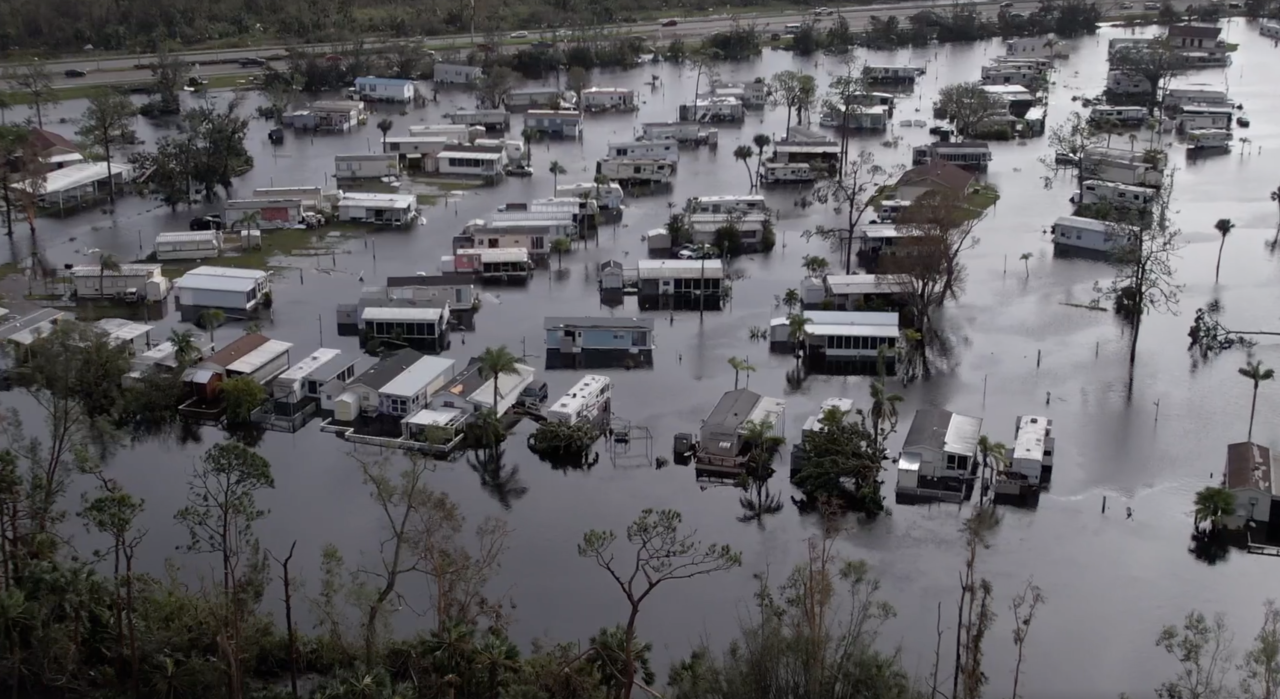MIAMI — The National Hurricane Center on Monday released its report on Hurricane Ian, a catastrophic storm that packed 155 mph winds when it slammed into southwest Florida last September.
The report found that the monster hurricane reached Category 5 status in the Gulf of Mexico but was a Category 4 storm when it made landfall near Punta Gorda on Sept. 28.
Ian was responsible for more than $112 billion in damage, making it the costliest hurricane in Florida's history and the third-costliest in United States history, according to the NHC.
In the United States, Ian was responsible for at least 156 fatalities, 66 of which were considered deaths directly caused by the storm. The report said all direct deaths in the United States occurred in Florida.

Ian was also indirectly responsible for 90 casualties in the United States. Most of the victims — 84 in total — were located in Florida, with five in North Carolina and 1 in Virginia. The leading causes of death were lack of access to timely medical care (18), accidents (such a trip-and-fall during power outages; 16), and cardiac events (16). Other causes included vehicular accidents, accidents related to storm preparations or clean-up, carbon monoxide poisoning, suicide, and homicide. The age of deaths ranged from 6 to 101 years old.
The report said storm surge was the deadliest hazard, claiming 41 lives, with 36 of the 41 surge fatalities occurring in Lee County, Florida. There were 12 direct fatalities attributed to freshwater flooding in central and eastern Florida, eight were categorized as marine fatalities, four were related to wind and one was due to rough surf.
A boat carrying a reported 27 migrants traveling from Cuba to the United States capsized just off the coast of the Florida Keys in rough waters generated by Ian. While four passengers swam to shore and five were rescued, only seven bodies were recovered — accounting for seven of the eight marine deaths. The report said that 11 other people missing from the boat are not represented in the total fatalities. The NHC said a couple living on a separate boat that was set adrift from the Florida Keys was still missing.

In Florida, Ian produced a wide swath of heavy rainfall that led to considerable and deadly freshwater flooding. The highest storm total rainfall recorded was 26.95 inches in Grove City, Florida, located just north of the landfall location on the western side of the state. Counties north of the track of Ian's center — including Charlotte, Sarasota, Hardee, DeSoto, Polk, and Manatee — experienced significant flooding when the Peace, Myakka, and Alafia Rivers and Horse Creek all crested to record levels.
Ian produced a catastrophic storm surge along the southwest coast of Florida, impacting the barrier islands near Fort Myers, as well as rivers and bays such as the Caloosahatchee River, Estero Bay, the Imperial River, and Naples Bay. Peak storm surge inundation levels of 10 to 15 feet above ground level occurred in Fort Myers Beach. Ian also produced a significant storm surge on the northeast coast of Florida as it passed over the state.
The NHC said stormwaters exiting back into the Gulf of Mexico carried debris, fertilizer and other pollutants. Scientists from NOAA's National Centers for Coastal Ocean Science tracked a harmful algal bloom in the days following Ian off the coast of southwestern Florida. Researchers from Florida Gulf Coast University also noted significant damage to artificial reefs in the region.
TORNADO OUTBREAK
Ian produced 15 tornadoes in the United States. Fourteen of the tornadoes occurred in Florida on Sept. 27-28 in Ian's outer rain bands.
The magnitude of the tornadoes ranged from EF 0‒2, some of which caused injuries and considerable property damage. The storm produced an EF‒2 tornado that hit the Kings Point community near Delray Beach on Sept. 27, injuring two people as it cut a 6-mile path through southern Palm Beach County with a width of 200 yards.
An EF-1 tornado with winds of 90 mph also tore through Wellington and parts of Loxahatchee on the same night, cutting an 8.3-mile path through Palm Beach County.
An EF-1 tornado also formed at the North Perry Airport in Pembroke Pines, damaging several buildings and aircraft and causing an estimated $2 million in property damage.
IMPACT ON INFRASTRUCTURE
In Fort Myers Beach alone, an estimated 900 structures were totally destroyed, and 2,200 were damaged. In Lee County, at least 52,514 structures were impacted, of which 5,369 were destroyed and 14,245 received major damage. Bridges and roadways were also severely damaged or destroyed.
A portion of Interstate 75 in southern Sarasota County was shut down due to flooding from the Myakka River. In Collier County, 33 buildings were destroyed, and more than 3,500 buildings sustained major damage while at least 200 homes were destroyed in Charlotte County. In central and eastern Florida, widespread historic freshwater flooding caused destruction and significant damage to many structures and roadways, leading to over 250 water rescues.
In Volusia County, 40 buildings were destroyed, and 1,378 structures were damaged. Ian damaged an estimated 4,100 structures in Osceola County and 1,656 structures in Seminole County.
The Florida Department of Agriculture and Consumer Services estimated $1.1 to $1.8 billion in losses due to flooding and wind damage to the state's crops and infrastructure.
About 3.28 million customers in Florida lost power from the storm.
The hurricane also knocked out the Sanibel Bridge, which connects Sanibel Island to the mainland. A temporary bridge was put in place the next month to allow resident and crews to access the island.
Hurricane season begins June 1 and runs through Nov. 30 with the most active months in Florida coming in the mid-summer through October.
Read the full report below:








